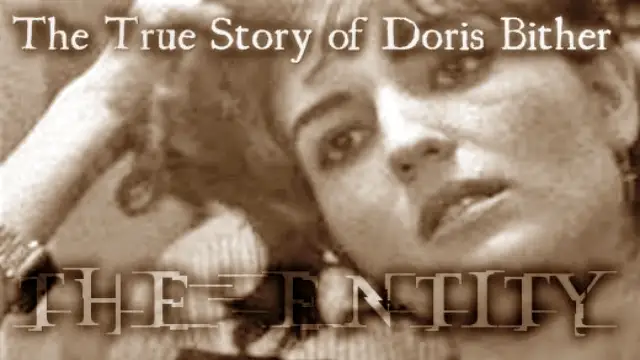In 1982, The Entity hit theaters in the U.S., captivating audiences with its shocking portrayal of a woman tormented by supernatural forces. The movie, based on the real-life experiences of Doris Bither, depicted her claims of repeated sexual assaults by unseen entities—a phenomenon known as Spectrophilia. For those unfamiliar with the story, let’s dive into this bizarre and disturbing case.
Key Points
The Story of Doris Bither
In 1974, Doris Bither, a single mother in her mid-thirties, approached Dr. Barry Taff, a parapsychologist, with an unbelievable tale. Living in Culver City, California, Bither claimed she was being repeatedly attacked by three spirits. Two smaller entities would hold her down while a third, larger one, assaulted her. This disturbing experience wasn’t limited to Doris alone; her four children—three sons aged 10, 13, and 16, and a 6-year-old daughter—also reported paranormal activity in their home. Her children even named some of the spirits they encountered.
Doris’ story gained credibility when her sons and even her boyfriend at the time witnessed these supernatural occurrences. Her eldest son claimed he was thrown across the room during one of the attacks, lending even more weight to the incredible tale.
Paranormal Investigation
Dr. Barry Taff and his team of over 30 investigators took a keen interest in Bither’s case. They conducted several studies in her home, using various equipment to document any signs of paranormal activity. The team reported numerous instances of unexplained phenomena, from strange lights to objects moving on their own. In one instance, photographs captured mysterious orbs and streaks of light, further adding to the mystery.
Despite these bizarre occurrences, many skeptics remained unconvinced. One troubling detail about Bither’s life stood out: she was a chronic alcoholic. Alcoholism can cause hallucinations, particularly in its later stages, and Bither’s history of abuse—both physical and emotional—raised additional questions about her mental state.
Mental and Emotional Factors
Doris Bither’s life was marked by trauma. She had suffered emotional and physical abuse from several ex-partners, and there were rumors of childhood sexual abuse, although these suspicions were never confirmed. Could her history of abuse have made her more susceptible to hallucinations or even fabricated memories? Her relationship with her children was reportedly strained, and the chaotic state of their home led investigators to suspect that Bither may have been suffering from depression.
Further complicating the case, witnesses noted that paranormal activity increased when Bither consumed alcohol. When she was sober, the strange events in her home seemed to taper off. This correlation between alcohol use and paranormal encounters fueled further doubts about the validity of her claims.
Skeptical Interpretations
While Bither’s story is chilling, many have raised valid points against it. Alcohol abuse can cause severe hallucinations, both visual and tactile. In addition, Doris’ troubled past could have played a role in shaping her perception of the events. Traumatic memories, combined with sleep paralysis—a condition that can cause vivid hallucinations while a person is in a semi-conscious state—might explain some of her experiences.
Moreover, the idea of “psychokinetic energy” has also been considered. Some theorists believe that Bither and her children could have unconsciously manifested these strange occurrences through their own mental energy, essentially creating their own poltergeist activity. While there is no scientific basis for such a theory, it has been proposed as a possible explanation for similar paranormal claims.
The Case of VB: Another Spectrophilia Victim?
Decades after Doris Bither’s story, another woman, whom we’ll refer to as VB for privacy, came forward with similar claims. VB believed she was being sexually assaulted by an unseen force in her inherited home. Much like Bither, VB was emotionally distressed and had a history of depression and substance use. She also reported strange occurrences in her home, such as objects moving or disappearing, followed by physical sensations of being touched inappropriately while she slept.
VB’s experiences mirrored Bither’s in several unsettling ways. However, unlike Bither, VB’s torment stopped when she moved out of her home. She claims that after leaving the house, the paranormal attacks ceased entirely. This contrasts with Bither’s assertion that the entities followed her to multiple residences, continuing their assaults.
The Verdict: Fact or Fiction?
The question remains: was Doris Bither truly a victim of Spectrophilia, or was her experience a result of psychological and emotional trauma? Could her chronic alcohol abuse and history of abuse have contributed to the terrifying visions she reported? The case of VB raises similar concerns—trauma, substance use, and an emotionally difficult period in her life could all have contributed to her experiences.
On the other hand, the sheer number of witnesses and the documented evidence collected during the investigation of Bither’s home are difficult to dismiss outright. Even if Spectrophilia itself seems far-fetched, the unexplained phenomena surrounding Bither’s case leave open the possibility that something truly strange was happening.
Closing Thoughts: Paranormal or Psychological?
Doris Bither’s case remains one of the most well-documented and debated instances of paranormal activity, particularly involving Spectrophilia. While skeptics point to alcohol-induced hallucinations, sleep paralysis, and emotional trauma as likely explanations, believers argue that the evidence is too substantial to ignore. Regardless of where you stand, Bither’s story continues to fascinate and terrify audiences, both in its original telling and through the lens of The Entity.
Whether or not you believe in the paranormal, the case of Doris Bither challenges our understanding of the unexplained and serves as a cautionary tale of the fine line between the supernatural and the psychological.




















